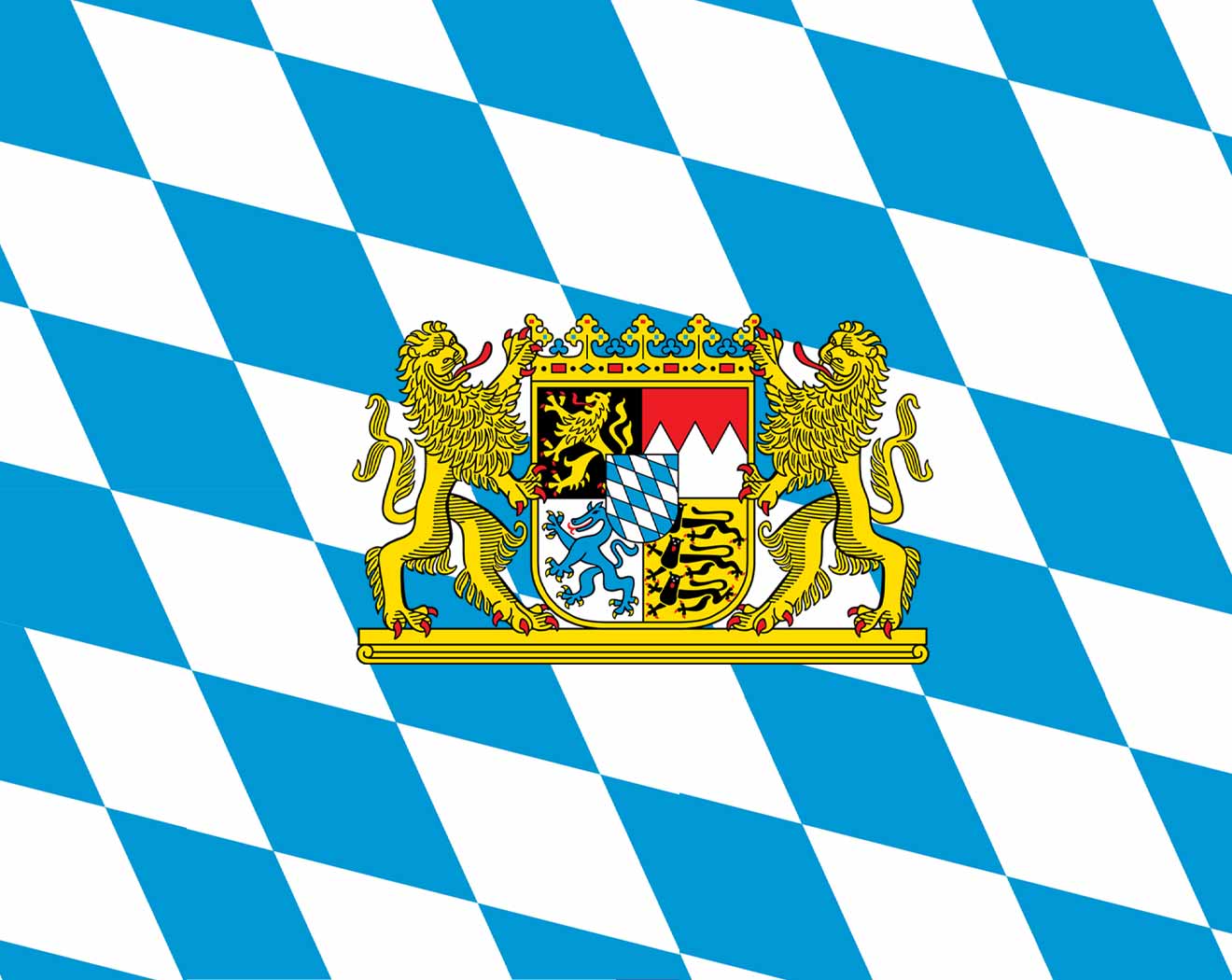英飞凌专注于迎接现代社会的三大科技挑战: 能源效率、 通讯和 安全性,为汽车和工业电子装置、芯片卡和安全应用以及各种通信应用提供半导体和系统解决方案。
英飞凌的产品素以高可靠性、卓越质量和创新性著称,并在模拟和混合信号、射频、功率以及嵌入式控制装置领域掌握尖端技术。
英飞凌的业务遍及全球,在美国加州苗必达、亚太地区的新加坡和日本东京等地拥有分支机构。2010财年(截止到2010年9月份),公司实现销售额32.95亿欧元,

Deutsch-Chinesische Enzyklopädie, 德汉百科

快闪存储器(英语:flash memory),是一种电子式可清除程序化只读存储器的形式,允许在操作中被多次擦或写的存储器。这种科技主要用于一般性数据存储,以及在计算机与其他数字产品间交换传输数据,如储存卡与U盘。闪存是一种特殊的、以宏块抹写的EEPROM。早期的闪存进行一次抹除,就会清除掉整颗芯片上的数据。
Flash-Speicher sind digitale Speicherbausteine; die genaue Bezeichnung lautet Flash-EEPROM. Sie gewährleisten eine nichtflüchtige Speicherung bei gleichzeitig niedrigem Energieverbrauch. Flash-Speicher sind portabel und miniaturisiert, es lassen sich jedoch bei Flash-EEPROM, im Gegensatz zu gewöhnlichem EEPROM-Speicher, Bytes, die kleinsten adressierbaren Speichereinheiten, nicht einzeln löschen oder überschreiben. Flash-Speicher sind auch langsamer als Festwertspeicher (ROM).
Flash memory is an electronic (solid-state) non-volatile computer storage medium that can be electrically erased and reprogrammed.
Toshiba developed flash memory from EEPROM (electrically erasable programmable read-only memory) in the early 1980s and introduced it to the market in 1984.[citation needed] The two main types of flash memory are named after the NAND and NOR logic gates. The individual flash memory cells exhibit internal characteristics similar to those of the corresponding gates.
While EPROMs had to be completely erased before being rewritten, NAND-type flash memory may be written and read in blocks (or pages) which are generally much smaller than the entire device. NOR-type flash allows a single machine word (byte) to be written – to an erased location – or read independently.
The NAND type operates primarily in memory cards, USB flash drives, solid-state drives (those produced in 2009 or later), and similar products, for general storage and transfer of data. NAND or NOR flash memory is also often used to store configuration data in numerous digital products, a task previously made possible by EEPROM or battery-powered static RAM. One key disadvantage of flash memory is that it can only endure a relatively small number of write cycles in a specific block.[1]
Example applications of both types of flash memory include personal computers, PDAs, digital audio players, digital cameras, mobile phones, synthesizers, video games, scientific instrumentation, industrial robotics, and medical electronics. In addition to being non-volatile, flash memory offers fast read access times, although not as fast as static RAM or ROM.[2] Its mechanical shock resistance helps explain its popularity over hard disks in portable devices, as does its high durability, ability to withstand high pressure, temperature and immersion in water, etc.[3]
Although flash memory is technically a type of EEPROM, the term "EEPROM" is generally used to refer specifically to non-flash EEPROM which is erasable in small blocks, typically bytes.[citation needed] Because erase cycles are slow, the large block sizes used in flash memory erasing give it a significant speed advantage over non-flash EEPROM when writing large amounts of data. As of 2013, flash memory costs much less than byte-programmable EEPROM and had become the dominant memory type wherever a system required a significant amount of non-volatile solid-state storage.
La mémoire flash est une mémoire de masse à semi-conducteurs ré-inscriptible, c'est-à-dire une mémoire possédant les caractéristiques d'une mémoire vive mais dont les données ne disparaissent pas lors d'une mise hors tension. Ainsi, la mémoire flash stocke les bits de données dans des cellules de mémoire, mais les données sont conservées en mémoire lorsque l'alimentation électrique est coupée.
Sa vitesse élevée, sa durée de vie et sa faible consommation (qui est même nulle au repos) la rendent très utile pour de nombreuses applications : appareils photo numériques, téléphones cellulaires, imprimantes, assistants personnels (PDA), ordinateurs portables ou dispositifs de lecture et d'enregistrement sonore comme les baladeurs numériques, clés USB. De plus, ce type de mémoire ne possède pas d'éléments mécaniques, ce qui lui confère une grande résistance aux chocs.
La memoria flash, anche chiamata flash memory, è una tipologia di memoria a stato solido, di tipo non volatile, che per le sue prestazioni può anche essere usata come memoria a lettura-scrittura. Quando viene utilizzata come ROM viene anche chiamata flash ROM.
In una memoria flash le informazioni vengono registrate in un vettore di floating gate MOSFET, una tipologia di transistor ad effetto di campo in grado di mantenere carica elettrica per un tempo lungo. Ogni transistor costituisce una "cella di memoria" che conserva il valore di un bit. Le nuove flash utilizzano delle celle multilivello che permettono di registrare il valore di più bit attraverso un solo transistor.
Diversamente dalle tecnologie precedenti, la tecnologia Flash ha reso possibile il salvataggio o la cancellazione di dati in un unico passo, introducendo quindi un incredibile guadagno in velocità, e grazie alla non-volatilità è usata frequentemente nelle fotocamere digitali, nei lettori di musica portatili, nei cellulari, nelle pendrive (chiavette), nei palmari, nei moderni computer portatili e in molti altri dispositivi che richiedono un'elevata portabilità e una buona capacità di memoria per il salvataggio dei dati.
Esistono principalmente due tipologie di memorie flash, dette NOR flash e NAND flash, che differiscono per l'architettura ed il procedimento di programmazione. Vi è anche una tipologia ibrida, la AND flash, che sfrutta le caratteristiche di entrambe, NOR e NAND.
La memoria flash derivada de las siglas EEPROM permite la lectura y escritura de múltiples posiciones de memoria en la misma operación. Gracias a ello, la tecnología flash, mediante impulsos eléctricos, permite velocidades de funcionamiento muy superiores frente a la tecnología EEPROM primigenia, que sólo permitía actuar sobre una única celda de memoria en cada operación de programación. Se trata de la tecnología empleada en los dispositivos denominados memoria USB.

现场可编程逻辑门阵列(英语:Field Programmable Gate Array,缩写为FPGA),它以PAL、GAL、CPLD等可编程逻辑器件为技术基础发展而成。作为特殊应用集成电路中的一种半定制电路,它既弥补全定制电路不足,又克服原有可编程逻辑控制器逻辑门数有限的缺点。
Ein FPGA (Akronym für Field Programmable Gate Array) ist ein integrierter Schaltkreis (IC) der Digitaltechnik, in welchen eine logische Schaltung geladen werden kann. Die Bezeichnung kann übersetzt werden als im Feld (also vor Ort, beim Kunden) programmierbare (Logik-)Gatter-Anordnung.
Anders als bei der Programmierung von Computern, Mikrocontrollern oder Steuerungen bezieht sich hier der Begriff Programmierung nicht nur auf die Vorgabe zeitlicher Abläufe, sondern vor allem auch auf die Definition der gewünschten Schaltungsstruktur. Diese wird mittels einer Hardwarebeschreibungssprache formuliert und von einer Erzeugersoftware in eine Konfigurationsdatei übersetzt, welche vorgibt, wie die physischen Elemente im FPGA verschaltet werden sollen. Man spricht daher auch von der Konfiguration des FPGA. Ohne diese hat der Baustein keine Funktion.
FPGAs stellen eine Weiterentwicklung der PLDs dar und kommen in vielen Gebieten der digitalen Elektronik zum Einsatz.


 IT-Times
IT-Times
 HPC
HPC


 IT-Times
IT-Times
 Mainframe
Mainframe


 IT-Times
IT-Times
 Processing Units - CPU, GPU, APU, TPU, VPU, FPGA, QPU, IPU, PIC
Processing Units - CPU, GPU, APU, TPU, VPU, FPGA, QPU, IPU, PIC


 IT-Times
IT-Times
 Internet of Things
Internet of Things


 IT-Times
IT-Times
 Semiconductor technology
Semiconductor technology


 IT-Times
IT-Times
 IC
IC
 Japan
Japan

 Science and technology
Science and technology
 Global Innovators
Global Innovators


 California-CA
California-CA


 IT-Times
IT-Times
 IC
IC


 IT-Times
IT-Times
 Semiconductor technology
Semiconductor technology
 United States
United States

 Science and technology
Science and technology
 Global Innovators
Global Innovators


图形处理器(英语:graphics processing unit,缩写:GPU),又称显示核心、视觉处理器、显示芯片或绘图芯片,是一种专门在个人计算机、工作站、游戏机和一些移动设备(如平板电脑、智能手机等)上运行绘图运算工作的微处理器。
图形处理器是英伟达公司(NVIDIA)在1999年8月发表精视 256(GeForce 256)绘图处理芯片时首先提出的概念,在此之前,计算机中处理视频输出的显示芯片,通常很少被视为是一个独立的运算单元。而对手冶天科技(ATi)亦提出视觉处理器(Visual Processing Unit)概念。图形处理器使显卡减少对中央处理器(CPU)的依赖,并分担部分原本是由中央处理器所担当的工作,尤其是在进行三维绘图运算时,功效更加明显。图形处理器所采用的核心技术有硬件座标转换与光源、立体环境材质贴图和顶点混合、纹理压缩和凹凸映射贴图、双重纹理四像素256位渲染引擎等。
图形处理器可单独与专用电路板以及附属组件组成显卡,或单独一片芯片直接内嵌入到主板上,或者内置于主板的北桥芯片中,现在也有内置于CPU上组成SoC的。个人计算机领域中,在2007年,90%以上的新型台式机和笔记本电脑拥有嵌入式绘图芯片,但是在性能上往往低于不少独立显卡。[1]但2009年以后,AMD和英特尔都各自大力发展内置于中央处理器内的高性能集成式图形处理核心,它们的性能在2012年时已经胜于那些低级独立显卡,[2]这使得不少低级的独立显卡逐渐失去市场需求,两大个人计算机图形处理器研发巨头中,AMD以AMD APU产品线取代旗下大部分的低级独立显示核心产品线。[3]而在手持设备领域上,随着一些如平板电脑等设备对图形处理能力的需求越来越高,不少厂商像是高通(Qualcomm)、PowerVR、ARM、NVIDIA等,也在这个领域里纷纷“大展拳脚”。
GPU不同于传统的CPU,如Intel i5或i7处理器,其内核数量较少,专为通用计算而设计。相反,GPU是一种特殊类型的处理器,具有数百或数千个内核,经过优化,可并行运行大量计算。虽然GPU在游戏中以3D渲染而闻名,但它们对运行分析、深度学习和机器学习算法尤其有用。GPU允许某些计算比传统CPU上运行相同的计算速度快10倍至100倍。
Ein Grafikprozessor (englisch graphics processing unit – GPU, seltener engl. visual processing unit – VPU[1]) ist ein auf die Berechnung von Grafiken spezialisierter und optimierter Prozessor für Computer, Spielkonsolen und Smartphones. Zusätzlich gibt er die berechneten Grafiken an ein oder mehrere Displays aus. Früher hatten Grafikkarten gar keine eigenen Rechenfähigkeiten und waren reine Ausgabekarten. Ab Mitte der 1990er Jahre wurden zuerst 2D-Fähigkeiten und später rudimentäre 3D-Fähigkeiten integriert, der Grafikprozessor war festverdrahtet oder seine Programmierbarkeit war beschränkt auf seine Firmware. Seit Mitte der 2000er Jahre kann die CPU „Programme“ auf die Grafikkarte/in die GPU laden, die so in beschränktem Rahmen flexibel programmierbar ist.
Grafikprozessoren findet man auf dem Die von CPUs mit integrierter Grafikeinheit (manchmal APU genannt), auf der Hauptplatine (Onboard, als Integrierter Grafikprozessor) wie auch auf Erweiterungskarten (Steckkarte). Im letzteren Fall sind mehrere GPUs auf einer Grafikkarte, bzw. auch mehrere Grafikkarten pro PC möglich. Für Notebooks gibt es externe Erweiterungsboxen, in die eine Grafikkarte gesteckt werden kann; in Dockingstationen kann eine eigene Grafikeinheit verbaut sein. Fast alle heute produzierten Grafikprozessoren für Personal Computer stammen von AMD, Intel oder Nvidia. Die Integration auf Steckkarten liegt dagegen bis auf Sonder- und Referenzmodelle seit einiger Zeit bei anderen Herstellern.
Un processeur graphique, ou GPU (de l'anglais Graphics Processing Unit), est un circuit intégré la plupart du temps présent sur une carte graphique (mais pouvant aussi être intégrée sur une carte-mère ou dans un CPU) et assurant les fonctions de calcul de l'affichage. Un processeur graphique a généralement une structure hautement parallèle (voir accélération matérielle) qui le rend efficace pour une large palette de tâches graphiques comme le rendu 3D, en Direct3D, en OpenGL, la gestion de la mémoire vidéo, le traitement du signal vidéo, la décompression Mpeg, etc.
Leur parallélisme massif les rend aussi intéressants comme processeurs de calcul matriciel, ou pour des cassages de code en force brute1 d'archives chiffrées. Enfin, leur rapport performance/prix les avantage pour le calcul2.
Peu d’entreprises conçoivent de tels processeurs : les plus connues sont NVIDIA, AMD (anciennement ATI) et Intel. Il y a aussi d'autres fabricants désormais moins importants ou moins connus du grand public, comme que Qualcomm, S3 Graphics, Matrox, 3DLabs (en), et XGI (en). Ces entreprises sont dites « Fabless », c'est-à-dire qu'elles conçoivent les circuits graphiques, mais ne les fabriquent pas en série. D'autres entreprises (Asus, MSI, PNY…) se chargent ensuite de proposer des cartes graphiques intégrant ces processeurs. Ce sont les entreprises constructrices. Celles-ci prennent en général une certaine liberté de modification des fréquences de fonctionnement des GPU par rapport aux fréquences de base préconisées par les concepteurs. C'est le principe de l'overclocking. Bien entendu, ces modifications nécessitent un choix rigoureux dans le système de refroidissement, car bien souvent, les fréquences en hausse provoquent également en contrepartie une hausse de température, à l'image des CPU. Ces fréquences varient entre les constructeurs et selon les modèles et les systèmes de refroidissement proposés par ces entreprises. L'écart de performance entre les modèles de référence (fournis par les concepteurs) et les constructeurs varie et certains GPU personnalisés peuvent même présenter un gain non négligeable par rapport au GPU de référence.
L'unità di elaborazione grafica (più nota come GPU, dalla lingua inglese graphics processing unit) o unità di elaborazione visiva (VPU, in inglese visual processing unit) o processore grafico o processore visivo è una tipologia particolare di coprocessore che si contraddistingue per essere specializzata nel rendering di immagini grafiche. Il suo tipico utilizzo è come coprocessore della CPU e da alcuni anni viene anche utilizzata in generiche elaborazioni dati (GPGPU).
La GPU è tipicamente implementata come microprocessore monolitico e, da alcuni anni, viene anche implementata assieme alla CPU nel medesimo circuito integrato.[1] Da alcuni anni vengono anche prodotti processori multicore formati da più core di GPU.
processori multicore | informatica | microprocessore monolitico rendering | coprocessore | elaborazioni dati | CPU grafiche.
Unidad de procesamiento gráfico o GPU (Graphics Processing Unit) es un coprocesador dedicado al procesamiento de gráficos u operaciones de coma flotante, para aligerar la carga de trabajo del procesador central en aplicaciones como los videojuegos o aplicaciones 3D interactivas. De esta forma, mientras gran parte de lo relacionado con los gráficos se procesa en la GPU, la unidad central de procesamiento (CPU) puede dedicarse a otro tipo de cálculos (como la inteligencia artificial o los cálculos mecánicos en el caso de los videojuegos).
La GPU implementa ciertas operaciones gráficas llamadas primitivas optimizadas para el procesamiento gráfico. Una de las primitivas más comunes para el procesamiento gráfico en 3D es el antialiasing, que suaviza los bordes de las figuras para darles un aspecto más realista. Adicionalmente existen primitivas para dibujar rectángulos, triángulos, círculos y arcos. Las GPU actualmente disponen de gran cantidad de primitivas, buscando mayor realismo en los efectos.
Las GPU están presentes en las tarjetas gráficas.
 Guangdong Sheng-GD
Guangdong Sheng-GD


 IT-Times
IT-Times
 IC
IC


 IT-Times
IT-Times
 Mobile Networks
Mobile Networks


 IT-Times
IT-Times
 Processing Units - CPU, GPU, APU, TPU, VPU, FPGA, QPU, IPU, PIC
Processing Units - CPU, GPU, APU, TPU, VPU, FPGA, QPU, IPU, PIC



 IT-Times
IT-Times
 Mainframe
Mainframe


 IT-Times
IT-Times
 PLC/DCS/FCS/SCADA/MES
PLC/DCS/FCS/SCADA/MES


 IT-Times
IT-Times
 Precision Instrument/Medical Equipment/Research Equipment
Precision Instrument/Medical Equipment/Research Equipment


 IT-Times
IT-Times
 Precision Instrument/Medical Equipment/Research Equipment
Precision Instrument/Medical Equipment/Research Equipment


 IT-Times
IT-Times
 Internet of Things
Internet of Things


 IT-Times
IT-Times
 Semiconductor technology
Semiconductor technology


 IT-Times
IT-Times
 IC
IC
 Japan
Japan
 Kantō
Kantō

 Transport and traffic
Transport and traffic
 High speed traffic
High speed traffic

 Transport and traffic
Transport and traffic
 High speed train technology
High speed train technology

 Companies
Companies
 *Big high-speed rail manufacturer
*Big high-speed rail manufacturer

 Companies
Companies
 *Centuries-old companies in the world
*Centuries-old companies in the world

 Science and technology
Science and technology
 Global Innovators
Global Innovators





 Automobile
Automobile
 *Self-driving car
*Self-driving car



 Automobile
Automobile
 ***Technology
***Technology
 England
England


 IT-Times
IT-Times
 Semiconductor technology
Semiconductor technology


 IT-Times
IT-Times
 Driver assistance systems
Driver assistance systems

 Companies
Companies
 United Kingdom
United Kingdom




 Automobile
Automobile
 ***Technology
***Technology



 Automobile
Automobile
 *Self-driving car
*Self-driving car

 Bavaria
Bavaria
 Germany
Germany


 IT-Times
IT-Times
 IC
IC


 IT-Times
IT-Times
 Semiconductor technology
Semiconductor technology


 IT-Times
IT-Times
 Sensor
Sensor


 IT-Times
IT-Times
 MCU
MCU


 IT-Times
IT-Times
 Driver assistance systems
Driver assistance systems

 Companies
Companies
 *Big semiconductor manufacturer
*Big semiconductor manufacturer

 Science and technology
Science and technology
 Global Innovators
Global Innovators

汽车电子
英飞凌是汽车行业的第二大头号芯片供应商。我们能够在汽车电子装置领域持续取得成功,主要得益于始终如一地关注汽车应用及需求,并依靠40多年的丰富经验以及拥有卓越质量的创新产品组合。英飞凌服务于各种汽车应用,比如:汽车动力系统(包括发动机和变速箱控制装置,用于优化燃耗,满足政府的排放要求,还包括适用于各种新兴技术的芯 片,例如混合动力汽车、起动机、发电机和配气机构)、车身和便利装置(包括车灯控制装置、HVAC、门锁系统、电动车窗、座椅记忆器和无钥匙进入系统)、 安全管理(例如电动助力转向系统、防碰撞系统、防抱死制动系统、安全气囊、稳定性控制、胎压监控)和信息娱乐系统(包括电子呼叫、信息调用、无线通信和全 球定位)。
汽车电子部负责为汽车行业提供传感器、微控制器和功率半导体,帮助降低燃耗和排放,改善安全性和经济性,为交通行业的可持续发展做出贡献。
我们汽车半导体解决方案, 更多信息。
